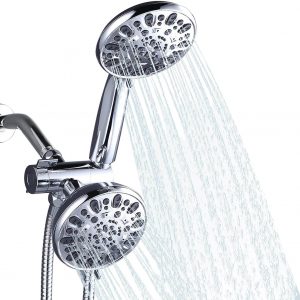How to Clean Grease Off Kitchen Faucets: A Step-by-Step Guide
Views:175 classificationBlog classificationFaucet Knowledge

Grease buildup on kitchen faucets is one of those sneaky problems that can easily go unnoticed—until the grime becomes impossible to ignore. Between frequent cooking, splattering oils, and messy hands, your faucet can accumulate layers of sticky residue that not only look unappealing but also harbor bacteria.
Fortunately, cleaning grease off your kitchen faucet doesn’t require harsh chemicals or hours of scrubbing. With the right approach and a few simple tools, you can restore the shine and cleanliness of your faucet in no time.
Whether you have a chrome, stainless steel, matte black, or brass finish, this guide will walk you through safe and effective methods to remove grease without damaging your faucet’s surface.
Why Grease Builds Up on Faucets
Before we dive into the cleaning process, it’s helpful to understand why grease tends to stick to kitchen faucets in the first place.
-
Frequent use: Every time you cook, oils from your hands and food can transfer to the faucet.
-
Cooking splatter: Grease can travel through the air when frying or sautéing, landing on nearby surfaces, including your faucet.
-
Humidity and steam: Moist environments help grease bond with dust, creating a sticky, hard-to-clean film.
Over time, this buildup can dull your faucet’s finish, make it harder to operate, and contribute to an unsanitary kitchen environment.
What You’ll Need
Here’s a list of tools and supplies you’ll want to gather before cleaning:
-
Dish soap (preferably grease-cutting)
-
Baking soda (optional for deeper cleaning)
-
White vinegar (optional for natural degreasing)
-
A soft sponge or microfiber cloth
-
An old toothbrush or small detailing brush
-
Warm water
-
Rubber gloves (optional)
-
Dry, lint-free cloth for polishing
Avoid abrasive scrubbers, steel wool, or harsh chemical cleaners unless you’re sure they’re safe for your faucet’s finish.
Step-by-Step Cleaning Instructions
Step 1: Start with Warm, Soapy Water
Fill a bowl or your sink with warm water and add a few drops of grease-cutting dish soap. Soak your microfiber cloth or sponge in the mixture and gently wipe down the entire faucet, paying close attention to the base and any crevices.
Soapy water is often enough to break down the first layer of grease. Use a back-and-forth motion rather than circular scrubbing to prevent streaking, especially on polished finishes.
Step 2: Use a Detailing Brush for Tough Spots
For areas around the base of the faucet, behind the handle, or in grooves, dip an old toothbrush or small brush into the soapy water and gently scrub. This is especially helpful for decorative or textured faucets where grime tends to hide.
Step 3: Apply Baking Soda for Stubborn Grease
If there’s still a sticky residue, sprinkle a small amount of baking soda directly onto the greasy areas. Dampen your sponge slightly and scrub gently. Baking soda acts as a mild abrasive and can lift grease without scratching most finishes.
Let the paste sit for a few minutes if the buildup is thick, then rinse with warm water and wipe clean.
Step 4: Try Vinegar for Natural Degreasing
White vinegar is a powerful natural degreaser, especially on mineral-rich grease stains. If your faucet is made of stainless steel or chrome, mix equal parts vinegar and warm water in a spray bottle. Spray the affected areas, let it sit for a minute or two, then wipe clean with a cloth.
Note: Avoid vinegar on brass or matte black finishes, as it can dull or damage the coating. Always spot-test first if you’re unsure.
Step 5: Rinse and Dry Thoroughly
Once the grease is gone, rinse the faucet with clean water to remove any residue from soap, vinegar, or baking soda. Then dry the entire fixture with a soft, lint-free cloth to prevent water spots and bring back the shine.
Drying is especially important for finishes like brushed nickel and stainless steel, which can develop hard water stains.
Special Considerations for Different Faucet Finishes
Not all faucets are created equal, and certain finishes require more delicate care:
-
Chrome: Can handle vinegar and baking soda but should be wiped dry to avoid spotting.
-
Stainless steel: Durable but prone to fingerprints and water spots—use a soft cloth and dry thoroughly.
-
Matte black: Avoid anything acidic (like vinegar); use only mild soap and water.
-
Brass or gold finishes: Use only non-abrasive, pH-neutral cleaners. Skip the vinegar and baking soda.
Always consult the manufacturer’s care guidelines if you’re unsure about what’s safe.
How to Keep Your Faucet Grease-Free
Regular maintenance goes a long way in preventing buildup:
-
Wipe down the faucet after each use: Even a quick swipe with a damp cloth can stop grease from accumulating.
-
Use a splatter guard when cooking: It minimizes airborne grease particles.
-
Install a range hood or fan: Ventilation helps reduce grease and moisture in the air.
-
Clean weekly: A light clean once a week will make deep cleanings much easier down the line.
Final Thoughts
Cleaning grease off your kitchen faucet may seem like a small task, but it can make a big difference in your kitchen’s appearance and hygiene. By using gentle, effective methods and staying consistent with upkeep, you’ll keep your faucet sparkling and your space feeling fresh.
Remember: the key isn’t just getting rid of the grease—it’s preventing it from taking hold in the first place. With just a few minutes of care each week, you can maintain a clean, gleaming faucet that matches the rest of your kitchen’s shine.
 WEWE Kitchen Faucets
WEWE Kitchen Faucets

您好!please sign in